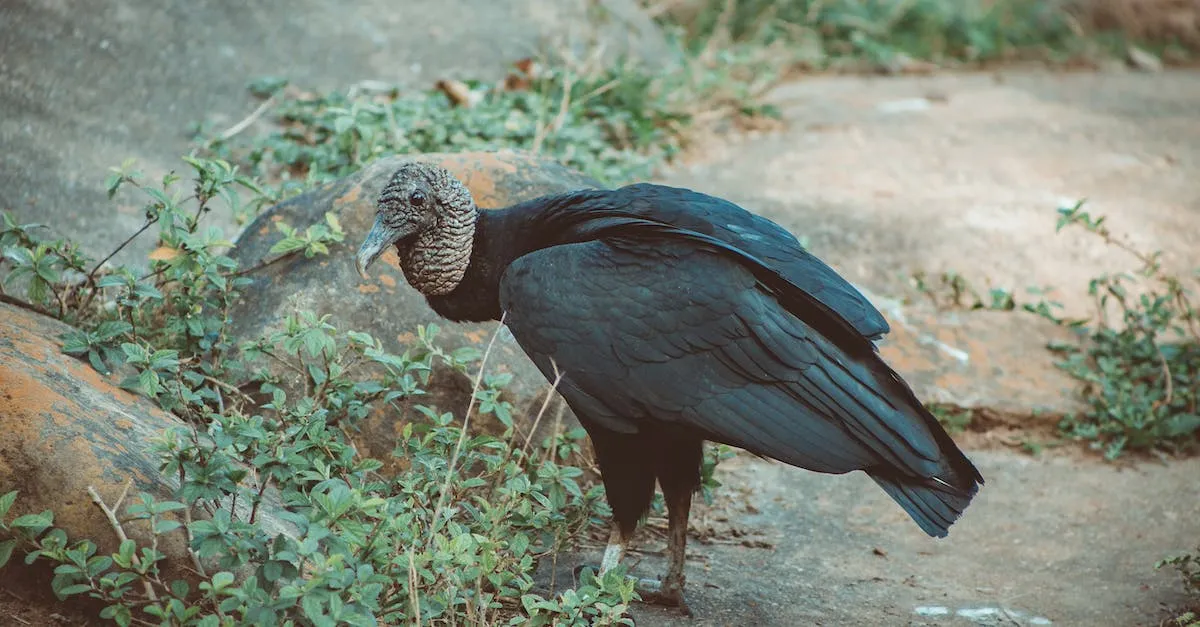California Condor Vs. Turkey Vulture: How To Tell The Difference
With wingspans over 9 feet wide, California condors and turkey vultures are two of the largest birds in North America. If you’ve spotted one of these huge black birds soaring overhead, you may be wondering: is that a California condor or a turkey vulture? While they share some similarities, there are key differences between these two vulture species that can help you identify them.
If you’re short on time, here’s a quick answer: The California condor is much larger and has white wings, while the smaller turkey vulture holds its wings in a dihedral V-shape in flight. The turkey vulture’s head is small and red, but the condor has a large bald head.
In this comprehensive guide, we’ll cover everything you need to know to distinguish a California condor from a turkey vulture, including size, flight patterns, head color, geographic range, endangered status, and more. We’ll also overview the natural history and conservation efforts for these unique scavengers to help you appreciate the diversity of North America’s vultures.
Size and Wingspan
The California condor is one of the largest flying birds in North America.
The California condor is truly an impressive bird, not just in terms of its wingspan, but also its overall size. With a wingspan of around 9.5 feet, these majestic birds can soar through the skies with ease.
In addition to their impressive wingspan, California condors have large bodies, weighing between 15 to 20 pounds. This makes them one of the heaviest birds in North America.
In comparison, turkey vultures are noticeably smaller with a wingspan of 5-6 feet.
While the California condor takes the crown for size, the turkey vulture is no slouch either. Turkey vultures have a wingspan that ranges from 5 to 6 feet, making them considerably smaller than their condor counterparts. In fact, their wingspan is almost half the size of the California condor’s.
Turkey vultures also have a smaller body size, rarely exceeding 5 pounds in weight.
To put it into perspective, imagine a California condor spreading its massive wings, reaching almost 10 feet from tip to tip. Now picture a turkey vulture with its smaller wingspan, hovering above, approximately half the size of the condor.
The difference in size between these two birds is quite noticeable.
For more information about the size and wingspan of California condors and turkey vultures, you can visit the All About Birds website, a trusted source for bird enthusiasts and researchers.
Flight Patterns
In flight, the California condor holds its wings straight out, forming a distinctive rectangular silhouette.
When it comes to flight patterns, the California condor and the turkey vulture have distinct differences. The California condor is known for its unique and unmistakable flight silhouette. When soaring through the skies, the condor holds its wings straight out, forming a rectangular shape that is easily recognizable.
This iconic posture is due to the condor’s broadly shaped wings and slotted primary feathers, which allow it to catch and ride air currents effortlessly. The condor’s flight pattern is a testament to its impressive wingspan and ability to glide for long periods without flapping its wings.
Turkey vultures, on the other hand, hold their wings in a slight dihedral or V-shape when in flight.
Unlike the California condor, turkey vultures have a different flying style. When in flight, turkey vultures hold their wings in a slight dihedral or V-shape, which gives their wingtips a more finger-like appearance.
This characteristic wing posture is one of the key ways to distinguish them from the condor. The longer primary feathers of the turkey vulture contribute to this V-shaped wing profile. This flight pattern allows the vultures to efficiently navigate the air currents and thermals as they search for carrion to scavenge.
It’s fascinating to observe how different bird species have evolved unique flight patterns suited to their specific needs.
For more information on the flight patterns of the California condor and turkey vulture, you can visit the All About Birds website, which provides detailed insights into bird behavior and identification.
Head Color
Adult California condors
Adult California condors have bare heads that lack feathers. Their heads range in color from orange, yellow, pink, to bright red depending on their mood and activity. The skin may appear dull or wrinkled when the condor is resting.
This unique characteristic makes the California condor easily distinguishable from other birds in the sky. The vibrant colors of their heads can change depending on various factors such as blood flow, temperature, and even the bird’s emotions.
So, if you spot a bird with a bright red or pink head soaring high above, it’s most likely a California condor!
Turkey vultures
Turkey vultures, on the other hand, have small feathered heads that are brightly red in color. Unlike the condor, a turkey vulture’s head doesn’t change color. The red head of a turkey vulture is covered in feathers, giving it a different appearance compared to the bare-headed condor.
This is one of the key distinguishing features between these two species. So, if you come across a bird with a red head covered in feathers, you’re looking at a turkey vulture and not a California condor.
Range
Currently, California condors are found in California, Arizona, Utah and Baja California (Mexico).
The range of the California condor is limited to a few areas in California, Arizona, Utah, and Baja California in Mexico. These majestic birds have faced numerous challenges over the years, including habitat loss and poisoning from lead ammunition.
However, thanks to reintroduction programs, their range has expanded slightly. Despite this progress, California condors are still classified as endangered and require ongoing conservation efforts to ensure their survival.
Turkey vultures occupy a much wider range across North America, Central America, and South America.
In contrast to the California condor, turkey vultures have a much broader range that spans across North America, Central America, and South America. These adaptable scavengers can be found in various habitats, from forests and grasslands to urban areas.
They are commonly seen in the United States and Canada, where they play a crucial role in the ecosystem by cleaning up carrion. The ability of turkey vultures to thrive in diverse environments has contributed to their widespread distribution throughout the Americas.
For more information on the range of California condors, you can visit the U.S. Fish and Wildlife Service website. If you’re interested in learning more about turkey vultures and their range, the Cornell Lab of Ornithology provides detailed information and birdwatching tips.
Conservation Status
The California condor is federally listed as endangered by the U.S. Fish and Wildlife Service.
The California condor, one of the most iconic and endangered bird species in North America, has faced a long battle for survival. In 1987, the population had dwindled to a mere 22 individuals, pushing them to the brink of extinction.
Recognizing the urgency of the situation, conservation efforts were initiated to save this majestic bird from disappearing forever.
Through the implementation of various conservation measures, including captive breeding programs, the population of California condors has seen a remarkable recovery. Today, there are over 500 California condors soaring through the skies, a testament to the success of these conservation efforts.
Turkey vultures have a secure and thriving population across their wide habitat range.
In stark contrast to the California condor, the turkey vulture enjoys a much more secure and thriving population. These scavengers, often seen soaring high in the sky, have adapted well to a wide range of habitats, from forests to grasslands to urban areas.
Conservation groups have classified the turkey vulture as a species of Least Concern, indicating that their population is stable and not currently at risk. This is undoubtedly good news for these remarkable birds, whose important role in the ecosystem as nature’s clean-up crew cannot be overstated.
The healthy population of turkey vultures is a testament to the resilience and adaptability of these birds, as well as the effective conservation measures in place to protect them.
Conclusion
The California condor and turkey vulture may appear somewhat alike when spotted overhead. But upon closer look, noticeable differences in their size, wings, head coloration, flight patterns, geographic ranges and conservation status set these two giant North American vultures apart. Understanding these distinctions will help any bird enthusiast correctly identify whether they’ve spotted the endangered California condor or the more common turkey vulture.








